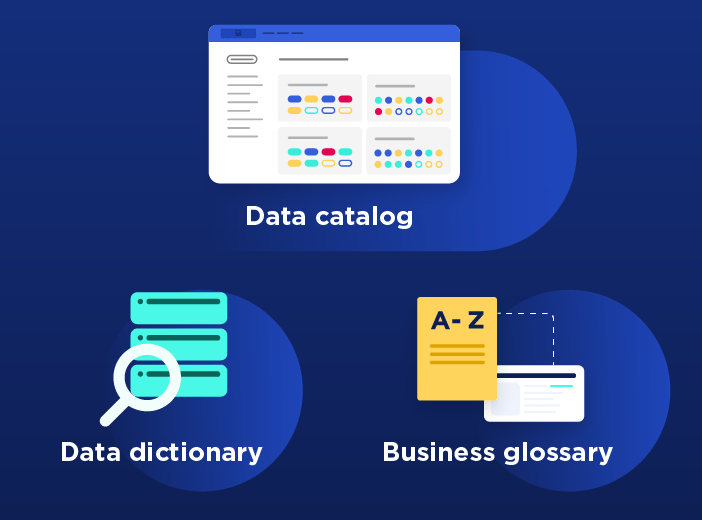What is Data as a Product (DaaP)?
Rather than being a simple data product, data as a product is a mindset that combines tools and strategy to apply product-like thinking to a dataset. It essentially applies the same approach as the release of a product, such as software, to data. That means teams create and ship standalone products that are continually supported and updated.
Data as a product is one of the foundational pillars of data mesh and involves applying product management principles to data.
What is the difference between Data as a Product, Data Products, and Data-as-a-Service (DaaS)?
There is considerable confusion between the similar concepts of data as a product, data products and data-as-a-service (DaaS).
Sometimes the term Data as a Product is abbreviated to “data product”, adding to misunderstandings. The main differences are:
- Data products cover any product or feature that uses data to meet a need, such as an analytics dashboard or data warehouse
- Data as a product applies a product mindset to data, ensuring it can be used standalone in a trusted manner
- Data-as-a-Service (DaaS) is a subscription model providing either tailored data assets, data products or data as a product to an external buyer.
What must Data as a Product contain?
Data as a product contains everything needed to benefit from the underlying data. It therefore contains the data itself, its metadata, programming codes and the necessary infrastructure to run it. It must also meet the following requirements:
- It must be easily discoverable, such as through a data marketplace
- It must be explorable – users must be able to understand what it is and does before committing to access it
- It must be secure and protect the underlying data
- It must be easily accessible, without requiring specialist data skills
- It must be trustworthy and be based on reliable, accurate and high-quality data
- It must be understandable and well documented to explain and encourage its use
- It must be interoperable and able to work with other data products
What are the benefits of Data as a Product?
Data as a product has two key benefits – as a methodology and approach it improves the quality of data management, while maximizing the value of data for the entire organization and external customers:
For data management:
- Introduces standardized processes for managing data, with built-in documentation and version control to ensure quality and consistency of approach.
- Enables data teams to be more proactive, creating uses for data that are based on business and strategic needs
- Allows greater reuse of work done across the organization, accelerating product development and ensuring greater efficiency
For the organization:
- Enables users to confidently discover, access and consume data, through all-in-one self-service solutions that meet their specific needs
- Breaks down silos between departments and ensures data is available to all, wherever it has been created
- Ensures strong governance and improves security, privacy and compliance through a consistent approach
How can you create Data as a Product?
Creating a usable data as a product portfolio requires teams to understand and apply product management principles to data.
This requires:
- An understanding of the available data within the organization, who owns it and what it enables
- Listening to the needs of users and wider business objectives. How can data be used to deliver on their requirements?
- An incremental approach, with a program of updates and versions for individual data as a product solutions
- Standardized procedures for working with the data across the business to maximize consistency and efficiency
- A full solution for users, providing data in a self-service manner that delivers everything needed to get the most from data
- Access rules to ensure security and good data/corporate governance
